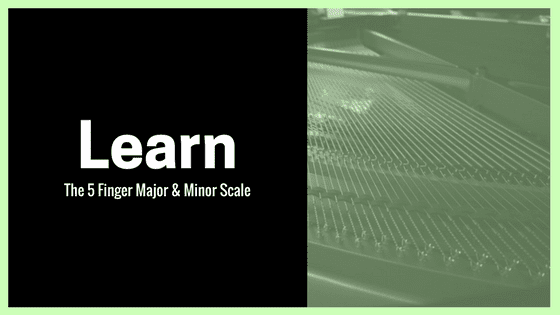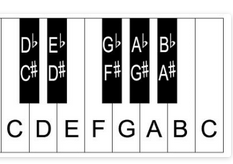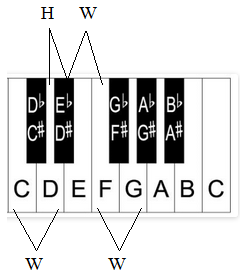Learn the 5-Finger Major and Minor Scales

In this article we'll discuss how to build the 5-finger major and minor scales. This will include learning a bit of music theory - basically a formula - that you can apply to any note on the piano in order to build the first 5 notes of the major and minor scales in any key. Keep in mind that there are only 12 major and minor scales, so this is something that you can master in a short amount of time with organized, methodical practice. A good approach to take in your practice sessions is to try to learn 3 major and minor scales per week. That way you will be able to learn all 12 major and minor scales in 4 weeks (about one month). Let's get started!
Half-Steps and Whole-Steps
Understanding half-steps and whole-steps is very important to learning to build all of the major and minor scales. When we go "up the keyboard" we are really saying that we are going from left to right across the keyboard and the pitches are getting higher. "Going down the keyboard" is just the opposite - right to left, pitches getting lower. Moving from one note to the very next possible note up or down the keyboard is called moving in half-steps. So, moving from 'C' to the very next note up in pitch ('C#') is moving up by half-step. Moving from 'C' to very next pitch down ('B') is moving down by half-step. Moving up or down by two half-steps is called moving by whole-step.

Now we are going to learn the half-step/whole-step formula for building a major scale.
Step 1: Choose a starting note. This is the 1st note of the major scale that you will construct.
Step 2: Go up by whole-step. This is the 2nd note of the major scale.
Step 3: Go up by whole-step. This is the 3rd note of the major scale.
Step 4: Go up by half-step. This is the 4th note of the major scale.
Step 5: Go up by whole-step. This is the 5th note of the major scale.
Let's plug in an example, starting on 'C' and building a C major scale using this half-step/whole-step formula:
The 5-Finger Minor Scale Formula
Here is the half-step/whole-step formula for building a minor scale.
Step 1: Choose a starting note. This is the 1st note of the minor scale that you will construct.
Step 2: Go up by whole-step. This is the 2nd note of the minor scale.
Step 3: Go up by half-step. This is the 3rd note of the minor scale.
Step 4: Go up by whole-step. This is the 4th note of the minor scale.
Step 5: Go up by whole-step. This is the 5th note of the minor scale.
Let's plug in an example, starting on 'C' and building a C minor scale using this half-step/whole-step formula:
A couple things that might be helpful as you practice these 5-finger major and minor scales:
- When going from major to minor, you really only need to lower the 3rd note of the scale by half-step. For example, the only difference between C major and C minor is the 3rd note of the scale ('E' as opposed to 'Eb').
- The fingering that you should use for these 5-finger major and minor scales is the same in every key. For the left hand (ascending), the fingering is 5-4-3-2-1. For the right hand (ascending), the fingering is 1-2-3-4-5.

